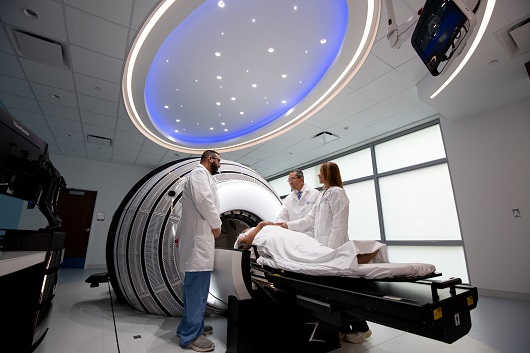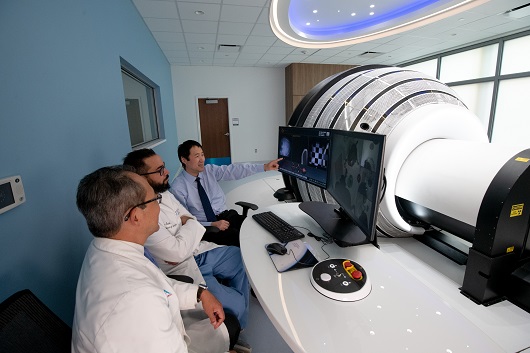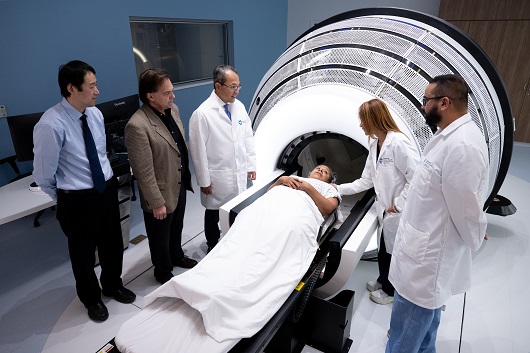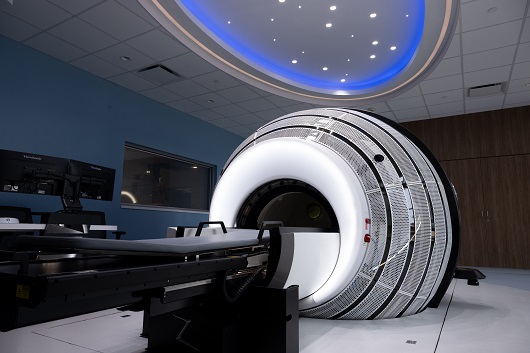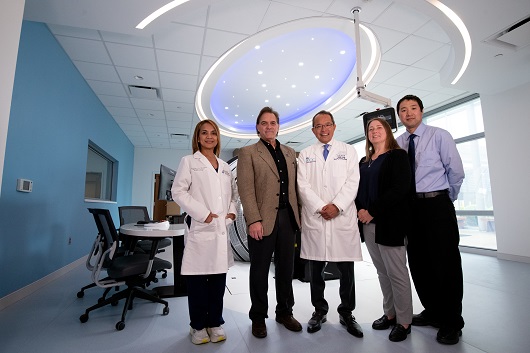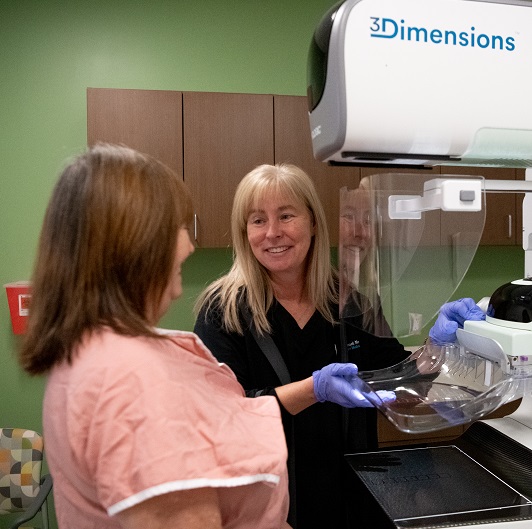Innovative Radiation Therapies Making Treatment More Precise
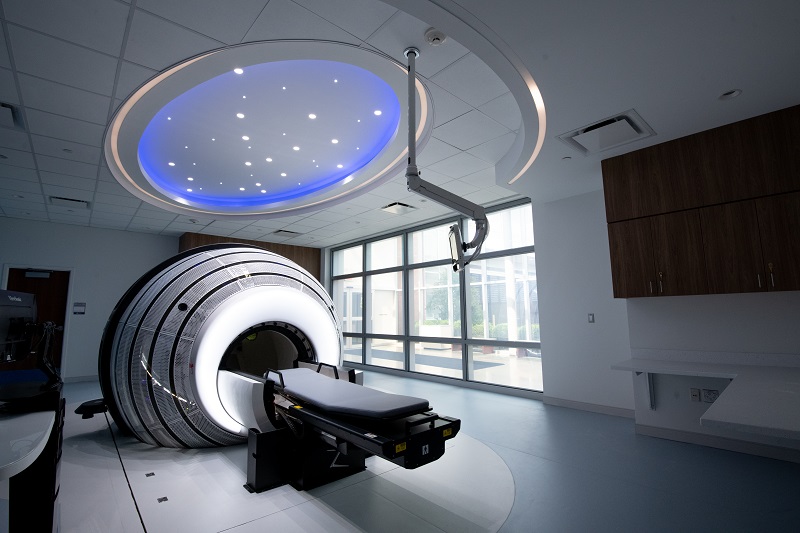
November 01, 2023
Losing a loved one to cancer can have a profound impact on a person. For twin brothers Shabbar F. Danish, M.D., and Adnan Danish, M.D., the devastating loss of their father to leukemia when they were in high school inspired both of them to pursue a career dedicated to fighting cancer.
Shortly after their father’s leukemia diagnosis, Dr. Adnan Danish was diagnosed with testicular cancer, which he ultimately beat.
Today, the two doctors are working to ensure other families don’t have to experience the loss that they suffered as teenagers. At Hackensack Meridian Health, they are employing the latest and greatest technologies in radiation therapy to treat cancer and tumors.
Here, we spotlight two of those advancements.
ZAP-X and Synaptive MRI: Increasing Efficiency and Accuracy
Precision is paramount when treating tumors, nerve disorders and other challenging and life-altering conditions inside the brain. But it’s even more extraordinary when treatment can be performed in a noninvasive, painless and safe manner, allowing patients to seamlessly return to everyday living. Thanks to the incredible generosity of Mrs. Mary Ellen Harris and the Golden Dome Foundation, Jersey Shore University Medical Center now has this life-changing technology – the ZAP-X® Gyroscopic Radiosurgery® with Synaptive’s Brain-Only Silent MRI.
The Dr. Robert H. and Mary Ellen Harris ZAP-X Center for Noninvasive Neurosurgery at the Hackensack Meridian Neuroscience Institute at Jersey Shore University Medical Center is the world’s first team to combine ZAP-X Gyroscopic Radiosurgery with Synaptive’s Brain-Only Silent MRI thanks to Mrs. Mary Ellen Harris’ belief and investment in the inspiring work of Dr. Shabbar Danish and the outstanding neuroscience and oncology teams at Jersey Shore University Medical Center.
Bringing these technologies together provides the most precise, accurate and rapid treatment possible for benign and malignant brain tumors, including brain metastases, meningiomas, pituitary adenomas and vestibular schwannomas. It’s also used for other intracranial disorders such as trigeminal neuralgia and arteriovenous malformations (AVMs).
Here’s how it works:
- A linear accelerator (a machine that uses electricity to create a stream of fast-moving subatomic particles) creates a combination of beams and positions that reduce radiation exposure to healthy brain cells as well as sensitive areas such as the optic pathways, brain stem and possibly previously treated areas.
- By integrating Synaptive Brain-Only Silent MRI, clinicians are able to obtain planning imaging within a day or two of treatment, allowing the treatment team to create the plan almost immediately after image acquisition.
- After patients are placed on the treatment table, real-time images are taken to confirm the treatment accuracy.
“The combination of these tools allows us to point the radiation at just the target tumor or lesion, avoiding almost all surrounding tissue,” says Dr. Shabbar F. Danish, chair of the Department of Neurosurgery at Hackensack Meridian Neuroscience Institute at Jersey Shore.
Benefits of combining ZAP-X and Synaptive MRI technology include:
- A lower risk of side effects
- Little to no recovery time compared with open surgery
- Fewer planning appointments before treatment
- Added comfort since patients do not have to wear the cumbersome head frame needed with other types of brain radiation
- No anesthesia, scalpels or incisions required
“With this machine, we can literally sit next to the patient. They can hear and see me, so they feel a lot more comfortable,” Dr. Shabbar Danish says. “Patients can even play music inside.”
Biology-guided Radiotherapy: Precision and Accuracy
Oncologists at John Theurer Cancer Center at Hackensack University Medical Center are employing a new way to make radiation therapy even more accurate: biology-guided radiotherapy (BGRT).
“BGRT is a more sophisticated and effective treatment option,” says Dr. Adnan Danish, attending physician at John Theurer Cancer Center and chief of Radiation Oncology at St. Joseph's Health, in partnership with Hackensack Meridian Health.
BGRT uses biological emissions from the patient’s own cancer cells to help guide the radiation treatment. It is approved for patients with cancers in the lung or bone cancers, including bone mets.
Here’s how it works:
- Before patients lay down to be treated, they are given a small amount of a radioactive drug (primarily made up of sugar), known as a tracer.
- Tumors rapidly consume the tracer (much faster than healthy cells), and then they produce emissions, thus essentially illuminating cancer to signal its exact location.
- The technology can immediately detect the emissions and respond in real-time with a beam of radiation that travels directly to each tumor and destroys it, even if tumors are moving, and continuously updated during the entire treatment session.
Benefits of BGRT:
- More precision—doctors know exactly where the cancerous tumor is located within the body at all times.
- More comfort for patients—often, during treatments for lung or breast cancer, patients are asked to hold their breath so the radiation beam can hit its target, not the surrounding healthy tissue, and this treatment avoids that.
- Fewer radiation treatment sessions—with previous technology, multiple treatment sessions are needed to target more than a few tumors.
“With BGRT, the cancer essentially destroys itself,” Dr. Adnan Danish says. “The key differentiator is the biology-guided radiotherapy and the continuous live feedback from the tumor itself. It is designed to enable delivery of a tracked radiation dose to multiple tumors in the same session by making the tumors themselves continuously signal their location.”
Next Steps & Resources:
- Meet our sources: Adnan Danish, M.D., and Shabbar Danish, M.D.
- To make an appointment with an oncologist near you, call 800-822-8905 or visit our website.
- Schedule a cancer screening near you.
- Learn more about advances in radiation oncology in NJ.
- Learn more about advances in neurosurgery in NJ.
The material provided through HealthU is intended to be used as general information only and should not replace the advice of your physician. Always consult your physician for individual care.





